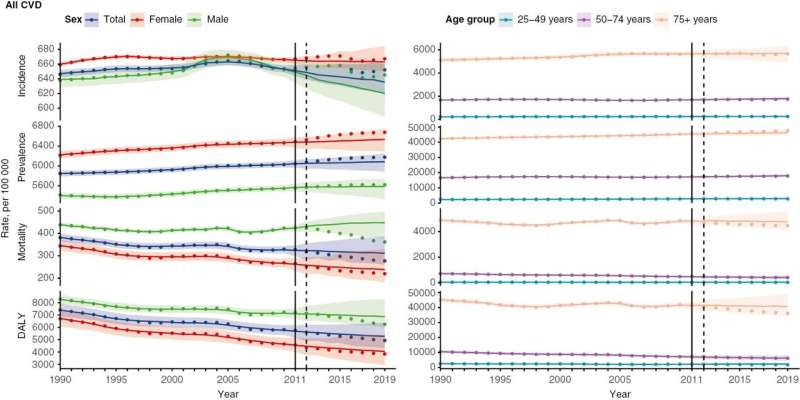- The American Heart Association has unveiled PREVENT, a novel cardiovascular risk calculator.
- The calculator includes heart failure for the first time, in addition to heart attack and stroke.
- It is the first risk calculator to include kidney and metabolic health as part of the risk factors for heart disease.
What do you know about your cardiovascular disease risk? Well, there’s never been a better time to learn.
The American Heart Association is taking a novel approach to assessing cardiovascular disease risk (CVD) with its PREVENT (Predicting Risk of cardiovascular disease EVENTs) risk calculator, which the organization
The updated algorithms for PREVENT are based on data from more than six million adults in the United States. Those individuals represent a diverse range of people across ethnic and socioeconomic backgrounds. The risk calculator also distinctly measures CVD risks across biological sexes, incorporating new research findings specific to women.
PREVENT makes several important updates to its methodologies to make its predictions more accurate and inclusive.
Some key takeaways from the scientific statement released today:
- For the first time ever, heart failure is included as an outcome, alongside heart attack and stroke.
- In another first, both kidney disease and metabolic health are included as factors to determine heart disease risk.
- PREVENT is more accurate and reliable for women, as the calculations are given separately for men and women, based on biological sex.
- Race has been removed as a risk factor.
Dr. Sadiya Khan, a Professor of Cardiovascular Epidemiology at Northwestern University, and first author of the scientific statement, told Healthline that their goal with PREVENT is “really to transform the paradigm for prevention.”
At the core of this new paradigm is a novel health construct known as
Obesity, kidney disease, and heart disease are often diagnosed and treated independently. CKM helps to shine a light on this triad, not as independent health outcomes, but as interdependent and biologically linked. That’s why
“It’s really, really important that we move away from thinking about treating someone’s diabetes as different from treating someone’s kidney disease, or treating someone’s heart disease, and really thinking about treating someone’s risk for heart disease overall as a whole person,” said Khan.
PREVENT is designed to give as accurate a picture as possible to doctors and patients about cardiovascular disease risk, including heart failure. It has been ten years since the AHA last updated their risk calculator in 2013.
The work is based on “
It can also be used to determine the development of CKM, which is separated into four stages, from no CKM risk (stage 1) to simultaneously having some form of heart disease and CKM risk factors (stage 4).
“This important article is not only about predicting heart attack and stroke, but incorporating more recent studies so that we have a more accurate risk estimation algorithm,”Dr. Roger Blumenthal, Director of the Johns Hopkins University Ciccarone Center for the Prevention of Heart Disease, told Healthline.
“So, we’re able to do a much better job of estimating the absolute risk, not only of heart attack and stroke, but also heart failure and kidney disease,” he said.
Blumenthal reviewed the AHA’s scientific statement prior to its publication but was not a contributing author.
A major change to the risk calculator is the decision to omit race as a risk factor. To be clear, race has clear
“We are not negating the fact that we know that certain racial and ethnic groups have higher risk. For example, black Americans have a much higher risk of developing heart disease and dying from heart disease. The move to remove race is not to mitigate that greater risk, but actually to prioritize and focus on the risk factors that lead to that increased risk,” said Khan.
If you’re curious to learn more about your risk of heart disease, think about having a discussion with your doctor. PREVENT isn’t meant for individuals to use on their own, but as part of a dialogue with their healthcare provider.
“I think that it’s so important to get people to realize that more than 80% of cardiovascular events are preventable. And we really want to try to do whatever we can to get people motivated early. And now this document also allows us to be much more accurate in predicting in middle-aged individuals what their risk really is,” said Blumenthal.
Early prevention is the key, he told Healthline.
If you’re not sure what that means, learning about the AHA’s
The American Heart Association has a new heart disease risk calculator known as PREVENT, that has been updated to include new risk factors like kidney and metabolic disease.
PREVENT is able to estimate heart health risks for individuals over the age of thirty for 10- and 30-year time spans.
The risk calculator should be used as tool for informed discussion between patients and their doctors about risk and prevention.






